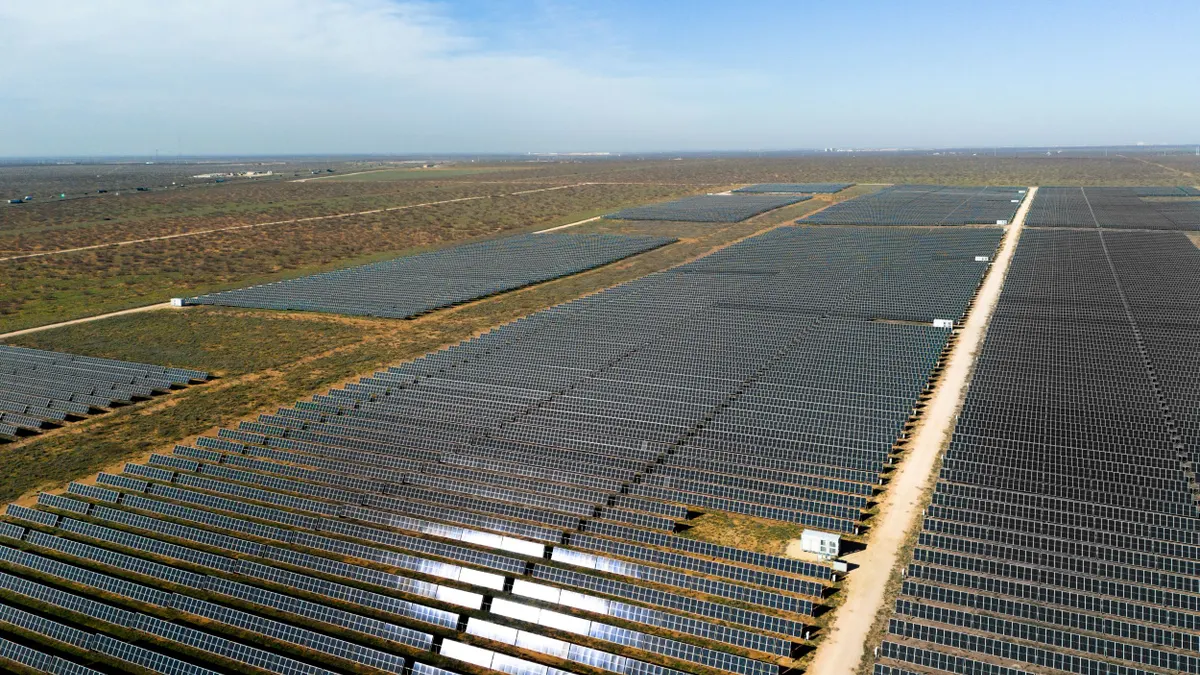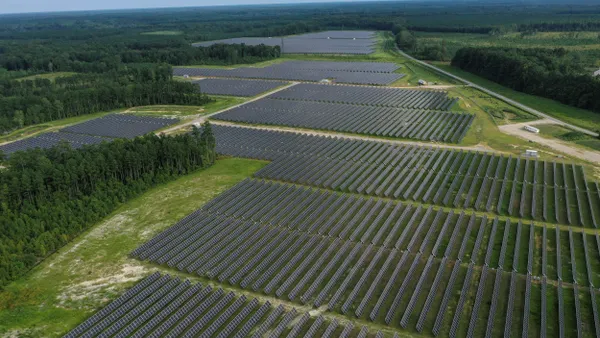The following is a contributed article by Nick Schlag, director, Zachary Ming, director, and Arne Olson, senior partner, at Energy and Environmental Economics.
Policy and economics are driving a transition toward low-carbon electricity systems that will be powered increasingly by intermittent renewable resources (wind, solar) and energy-limited resources (storage, demand response). While these "non-firm" resources can provide both low-cost energy and essential grid services, they are limited in their ability to provide capacity toward meeting resource adequacy needs.
As the recent events in California have made clear, failure to properly count the quantity of capacity available to meet load during extreme weather events can lead to inadequate power supplies and rotating blackouts. California officials are correct to point out that renewable energy is not to blame for the blackouts, and numerous studies have shown that power systems can be operated reliably with very high amounts of renewables. Nevertheless, these events are a stark reminder that reliability cannot be taken for granted as we transition away from thermal generation toward greater reliance on non-firm resources.
Adding up the capacity available to meet resource adequacy needs is significantly more complex for a power system with a high proportion of non-firm resources. Planners must have a thorough understanding of the system conditions that can lead to loss of load, and the statistically-likely performance of variable resources such as wind and solar during those events. Characterizing the severity and frequency of events that may occur only once every several years requires tremendous amounts of data and computing power. This complexity is compounded by the fact that non-firm resources have interactive effects — solar, wind and storage resources often complement each other, meaning that a system with all three resources present will be more reliable than a system with just one or two.
To make sense of these dynamics, the industry is increasingly turning to Effective Load-Carrying Capability ("ELCC") as the preferred method of measuring the capacity contribution of non-firm resources. Born out of the tradition of "loss-of-load-probability" modeling that system planners have long utilized to determine the planning reserve margin needed to ensure reliable electric service, ELCC is a natural extension of those methods to the problem of non-firm resources. Both California and Midwest Independent System Operator (MISO) currently employ ELCC in their resource adequacy programs, while PJM, the Southwest Power Pool and the Northwest Power Pool are actively exploring it. ELCC is also increasingly utilized by utilities in planning for and procuring non-firm resources.
ELCC is a sophisticated measure of the performance of non-firm resources during the times when it matters most — when the system is close to experiencing a capacity shortfall. ELCC is calculated using a deceptively simple "in-out" methodology — a small quantity of a given resource is added to a system, then "perfect capacity" is removed until the system achieves the starting level of reliability. The quantity of perfect capacity removed is the ELCC. For example, if a 100 MW solar facility can displace 40 MW of a perfectly-available resource while achieving the same reliability, the solar facility’s ELCC is 40/100 or 40%. ELCC is a technology-neutral measurement of equivalent "perfect" capacity — a system with a given quantity of ELCC megawatts will achieve the same level of reliability, regardless of what types of resources are providing those megawatts.
While the calculation of an individual ELCC value is conceptually straightforward, application of ELCC has proved challenging in the context of competitive markets. In this article, we discuss some practical considerations in the application of ELCC to resource adequacy programs and link to a white paper outlining a method to use ELCC to achieve an accurate, durable measure of the capacity contribution of non-firm resources.
Reliability planning must consider interactions between non-firm resources
Most competitive electricity markets today have some type of resource adequacy program with centrally-administered need determinations. While the structures of these programs vary widely, one common element is the need to assign capacity credits to individual resources. This is necessary to enable program participants to demonstrate compliance and resource owners to receive appropriate compensation. However, complex interactions between non-firm resources make the exercise of assigning an ELCC to each individual resource challenging.
One key interaction that is important to capture is the diminishing returns to scale of a specific resource type. This effect can be visualized through the impact of increasing solar penetrations pushing net peak demand into the evening, an effect that is already apparent in places like California and Hawaii.
Energy storage also suffers from diminishing returns, though for a different reason: its finite duration limits its ability to meet demand across extended periods. This means that the marginal ELCC of storage with a fixed duration will continue to decline as more is added to the system. Alternatively, progressively increasing durations would be needed to sustain a high marginal capacity value. The principle can also apply to different resource types; the presence of storage reduces the ELCC of demand response and vice-versa, since both provide similar short-duration services.
While resources with similar operating characteristics yield diminishing returns, combining resources with complementary characteristics can produce the opposite effect, a total ELCC that is greater than the sum of its parts. This effect has been described as a "diversity benefit". There are many combinations of resources that produce such an effect; solar and storage provide an intuitive illustration, where solar squeezes the net peak into fewer evening hours making it easier to meet with storage.
All intermittent and energy-limited resources interact with one another to some degree in their contributions to reliability needs. This points to significant observation: ELCC is a property of a portfolio of resources, not of individual resources themselves. The multiplicity of interactions and dimensions becomes increasingly difficult to disentangle as more resources of different types are added to a system. However, accounting for these interactive effects will be critically important as the scale of non-firm resources grows.
There Is no single way to incorporate interactive effects between non-firm resources
Incorporating interactive effects into capacity counting schemes is challenging because there is no unique, scientific method for doing so. For a single resource type, "marginal" ELCC sends the correct signal to the market for efficient capacity expansion, while "average" ELCC ensures that individual credits add up to the total portfolio value. Neither approach is likely be to a satisfactory, long-term answer for resource adequacy programs. Moreover, allocation of diversity benefits among multiple resources presents a "chicken-and-egg" problem: how much credit should solar get for enhancing the ability of energy storage to serve load after sundown, or storage for extending the hours when solar can be delivered to the grid?
Designing the most appropriate method for resource accreditation will require program administrators to exercise judgment to identify and balance several guiding principles. In many ways, the principles that underpin a sound framework for ELCC accreditation parallel the principles that guide electricity ratemaking; here, we express those principles as Reliability, Fairness, Efficiency and Acceptability. As in rate design, these principles will inevitably come into conflict with one another.
As a contribution to a necessary conversation about accrediting non-firm resources within resource adequacy programs, E3 has published a new whitepaper which proposes a framework that we believe successfully balances these principles. The core tenets of the approach are that 1) ELCC credits to individual resources are technology-neutral and can accurately reflect their unique characteristics, and 2) ELCC credits directly reflect the nature of each resource’s interactions with the portfolio, including both diminishing returns and diversity benefits.
As the transition to a decarbonized electricity system accelerates, the shortcomings of current methods of ELCC attribution will become increasingly pronounced. Interactions between non-firm resources are an inherent characteristic of a deeply decarbonized electricity system and will grow to be of profound importance. These interactions must be addressed directly in any centralized capacity market design in order to ensure that these programs remain robust and durable.






















